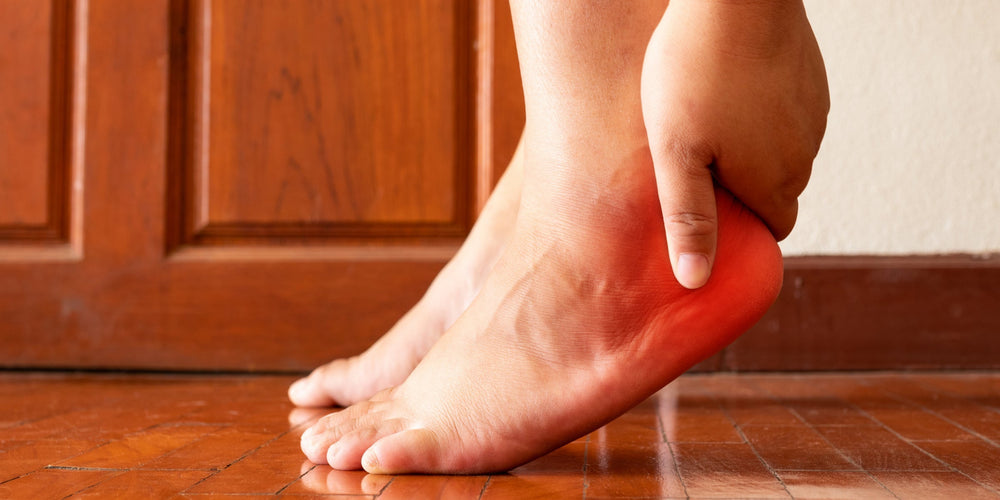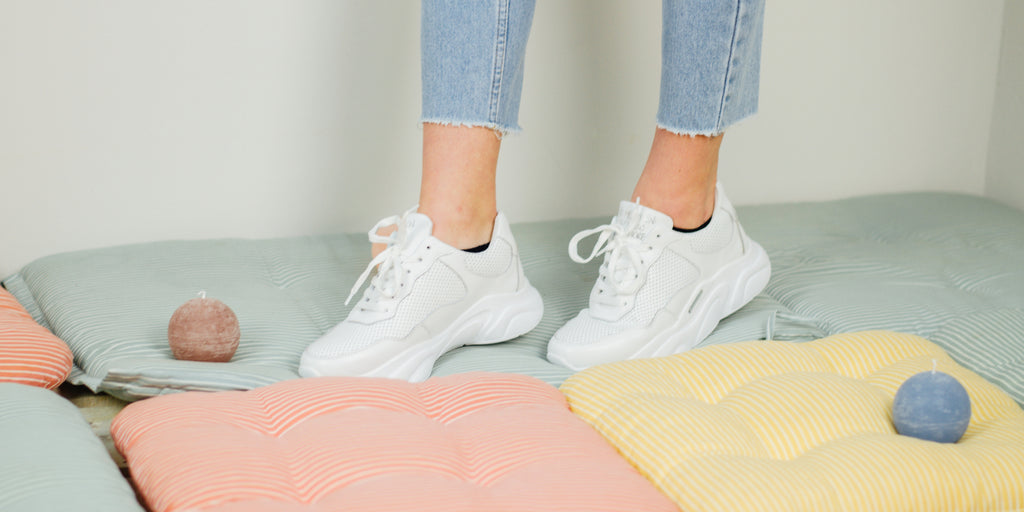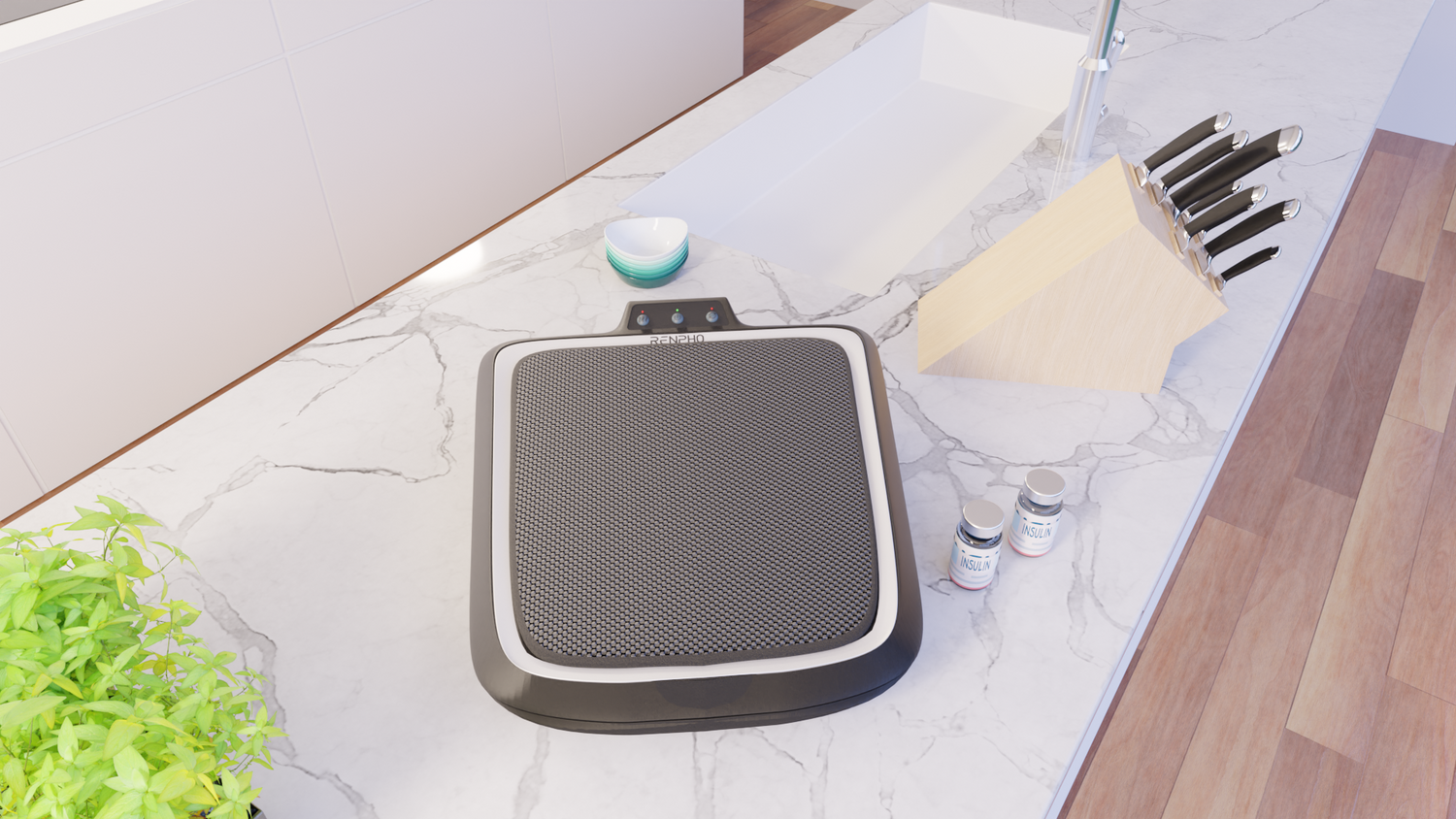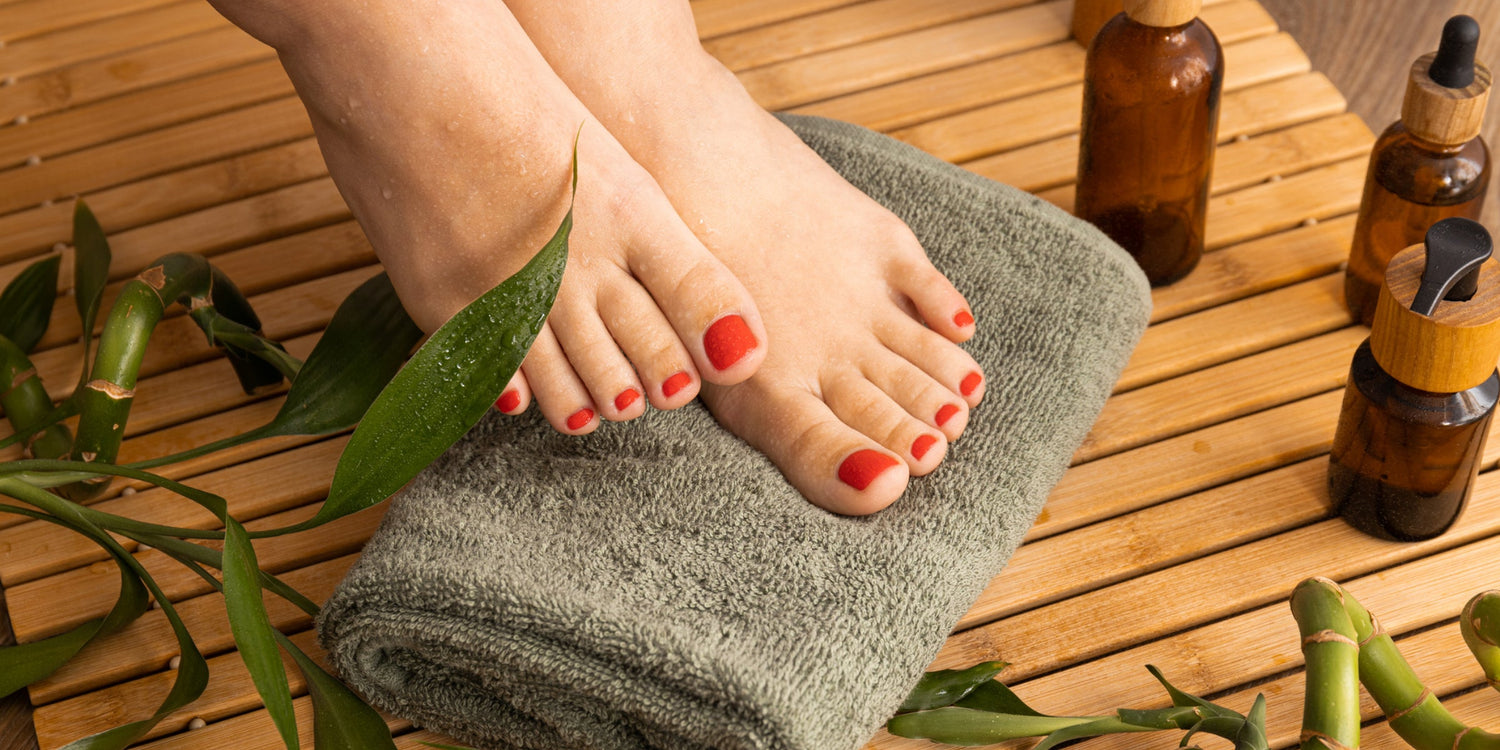Plantar Fasciitis 101: Understanding the Condition and How to Manage It

Stay tuned to our latest news
If you've ever experienced intense heel pain that makes walking or engaging in daily activities difficult, you may be familiar with plantar fasciitis, one of the most common foot conditions.
Because of the discomfort and pain, understanding plantar fasciitis is crucial in managing the condition effectively. Let’s delve into the various factors that contribute to its development. By the end, you'll be better equipped to implement preventive measures and make informed decisions about your treatment options.
However, besides understanding the condition, let’s also explore practical strategies for managing plantar fasciitis. From wearing supportive shoes to changing your exercise routine, we'll cover a range of options to help alleviate pain and promote healing. So, let's embark on a journey of understanding and discovering effective ways to manage this foot condition, so you can regain your mobility and live a pain-free life.
What Is Plantar Fasciitis?
As mentioned before, plantar fasciitis is a common foot condition that causes pain and discomfort in the heel or bottom of the foot. This condition occurs when the plantar fascia, a thick band of tissue that connects the heel bone to the toes, becomes inflamed or irritated. It typically manifests as a stabbing pain near the heel, which is usually more intense when taking the first steps in the morning or after prolonged periods of rest.
What Causes Plantar Fasciitis?
Plantar fasciitis is a painful condition that causes inflammation of the plantar fascia, a thick band of tissue connecting the heel bone to the toes. Several factors contribute to the development of plantar fasciitis.
The lack of proper arch support or cushioning in footwear is a common cause of plantar fasciitis. Wearing shoes without adequate support can increase stress on the plantar fascia, resulting in inflammation and pain.
Exercising with tight calf muscles or tight Achilles tendons can also cause plantar fasciitis. Tightness in these muscles can pull on the plantar fascia, leading to inflammation. Regular stretching exercises to maintain flexibility can help prevent this condition.
Engaging in high-impact activities such as long-distance running or walking can put excessive stress on the plantar fascia, leading to the development of plantar fasciitis. These repetitive high-impact activities can cause micro-tears in the fascia, resulting in inflammation and pain.
Other factors that increase the risk of plantar fasciitis include obesity, flat feet, high arches, and spending long periods standing or walking on hard surfaces.
Who Is at Risk of Plantar Fasciitis?
One major risk factor is gender, with research suggesting that women are more likely to develop plantar fasciitis than men, although the reasons behind this are not well understood.
Another significant risk factor is having high arches or flat feet. Both foot conditions can alter the distribution of weight and put excess stress on the plantar fascia, leading to inflammation and pain.
Tight Achilles tendons can also contribute to the development of plantar fasciitis. When the Achilles tendon is tight, it places additional strain on the plantar fascia, making it susceptible to injury.
Obesity is another risk factor for plantar fasciitis. The extra weight places increased pressure on the feet, causing the plantar fascia to become inflamed and painful.
Standing for long periods of time, especially on hard surfaces, is also a risk factor for plantar fasciitis. This constant pressure on the feet can lead to inflammation and pain in the plantar fascia.
Lastly, participating in activities that involve repetitive impact and stress on the feet, such as running or ballet, can increase the risk of developing plantar fasciitis. These activities place repeated strain on the plantar fascia, making it more likely to become damaged and inflamed.
What Does Plantar Fasciitis Pain Feel Like?
One of the primary symptoms of plantar fasciitis is heel pain. Individuals experiencing this condition often describe the pain as intense, particularly in the morning or after long periods of rest. When first getting out of bed or standing up after a period of inactivity, the pain can be sharp and stabbing. Walking or running may also exacerbate the discomfort, causing a burning sensation in the heel.
In addition to feeling pain in the heel, plantar fasciitis pain can spread across the bottom of the foot. This sensation is commonly described as aching or throbbing. Some individuals may also feel a tightness or tension in the arch of the foot. These sensations vary in severity and can affect mobility and daily activities.
How to Manage Plantar Fasciitis at Home?
While medical treatment may be necessary for severe cases, there are several ways to manage plantar fasciitis at home. Implementing these strategies can help individuals regain mobility and minimize the impact of plantar fasciitis on their daily lives.
-
Wear Supportive Shoes and Orthotics

Supportive shoes with features like thick soles and cushioning play a significant role in the treatment of plantar fasciitis. These shoes provide adequate arch support, reducing the strain on the plantar fascia. Thick soles absorb shock and reduce impact, preventing further irritations to the inflamed tissue. Additionally, cushioning in the shoes offers extra comfort and protects the heel from excessive pressure.
Orthotics, such as custom-made shoe inserts or heel pads, are highly beneficial in addressing heel pain. They help distribute the body weight evenly across the feet, relieving pressure on the heel. Orthotics provide additional arch support and promote proper foot alignment, reducing the strain on the plantar fascia. By providing cushioning and correcting abnormal foot mechanics, orthotics aid in alleviating pain and promoting healing.
It is important to replace footwear regularly to maintain its supportive features. Over time, shoes lose their cushioning and support, which can worsen plantar fasciitis symptoms. It is recommended to replace shoes every six to twelve months, depending on the frequency of use. Regular replacement ensures that the shoes provide the necessary support and cushioning required to address heel pain effectively.
In addition to wearing supportive shoes and using orthotics, shoe modifications can also be effective in managing plantar fasciitis. This may include using heel cups or wedges to provide additional support to the heel. However, it is crucial to seek professional advice before making any modifications to footwear or using orthotics. A healthcare professional, such as a podiatrist, can provide guidance on the most suitable shoe modifications and orthotics for individual cases.
-
Try Over-The-Counter Medication

Over-the-counter medications such as ibuprofen and naproxen can effectively relieve pain in swollen and irritated foot tissue. These nonsteroidal anti-inflammatory drugs (NSAIDs) work by reducing inflammation within the body.
Ibuprofen, commonly known by brand names such as Advil or Motrin, belongs to a class of NSAIDs that inhibit the production of prostaglandins, which are responsible for causing pain and inflammation. By blocking the enzymes that produce prostaglandins, ibuprofen helps to alleviate swelling and discomfort in the affected foot tissue.
Naproxen, available under the brand name Aleve, also works by inhibiting the production of prostaglandins. It specifically targets the COX-1 and COX-2 enzymes in the body, reducing both pain and inflammation in the foot tissue.
When using these over-the-counter medications to reduce foot pain, it is essential to follow the recommended dosage and frequency. Ibuprofen is typically taken in doses of 200-400 mg every 4-6 hours, not exceeding 1200 mg in a 24-hour period. Naproxen, on the other hand, is usually taken in doses of 220-550 mg every 8-12 hours, with a maximum daily dose of 1100 mg.
Remember that it is important to read and follow the instructions provided on the packaging of these medications or consult a healthcare professional for personalized dosing recommendations. If the pain persists or worsens, it is advisable to seek medical attention.
-
Apply Ice

To properly address the issue at hand, it is important to apply ice correctly. This can be done by using either an ice pack or ice cubes wrapped in a towel. The application of ice should be focused on the arch and heel of the affected foot for a maximum of 20 minutes per day.
Ice is beneficial because it helps to reduce swelling and inflammation by constricting blood vessels. When applied, the ice causes the blood vessels to narrow, which in turn decreases the flow of blood to the affected area. This constriction helps minimize swelling and inflammation, providing relief and promoting healing.
To begin the process, place the ice pack or ice cubes wrapped in a towel directly on the arch and heel of the affected foot. It is important to ensure that the ice is not applied directly to the skin, as this can cause discomfort or even frostbite.
Gently press the ice pack or towel-wrapped ice cubes to the affected area for up to 20 minutes. If using an ice pack, make sure it covers the arch and heel completely. If using ice cubes in a towel, ensure that they are evenly distributed under the towel.
During the 20-minute application, it is normal to initially experience coldness and numbness in the area. This is a sign that the ice is effectively constricting the blood vessels. However, if the cold sensation becomes too intense or uncomfortable, it is advisable to remove the ice pack or towel and wait a few minutes before reapplying.
By following these instructions, proper ice application can be achieved to effectively reduce swelling and inflammation in the arch and heel of the affected foot. Remember to limit the application to 20 minutes daily, and never apply ice directly to the skin.
-
Change Your Exercise Routine

When healing from an injury, it is crucial to adjust your exercise routine accordingly. In order to promote recovery and avoid further damage, it is recommended to switch from high-impact activities, such as running and walking, to lower-impact exercises. This switch will allow your body to heal while still staying active.
To address this change in your exercise routine, consider incorporating alternative exercises that put less pressure on your feet. Two excellent options are swimming and biking. Swimming is a great full-body workout that minimizes stress on your joints. The buoyancy of the water helps support your body weight, reducing the impact on your feet. Biking offers a low-impact cardiovascular exercise that does not strain your feet as much as running or walking.
By swapping high-impact activities with these lower-impact exercises, you can ensure that your feet are given the necessary time to heal. Not only will you continue to maintain your fitness level, but you will also allow your body to recover more effectively. So, if you are healing from an injury, make sure to switch to swimming or biking to put less pressure on your feet while still engaging in regular exercise.
-
Choose the Right Shoes

When choosing shoes for plantar fasciitis, there are several key features to look for that can provide the necessary support and cushioning to alleviate pain and prevent further damage to the plantar fascia.
Firstly, it is essential to choose shoes that offer proper arch support. The arch of the foot needs to be adequately supported to relieve tension on the plantar fascia. Look for shoes that have built-in arch support or the option to insert orthotic insoles to provide additional arch support.
Thick soles are also important in reducing tension on the plantar fascia. Thick soles help to absorb shock and minimize impact on the foot when walking or running. This reduces the strain on the plantar fascia, which can help to prevent tears and inflammation.
Extra cushioning is another key feature to consider when selecting shoes for plantar fasciitis. Look for shoes with cushioned insoles and padding around the heel and forefoot. The extra cushioning helps to absorb shock and provide additional comfort, reducing pressure on the plantar fascia.
Soft heel pads are crucial for reducing tension and preventing tears in the plantar fascia. The heel is a common area that experiences the most strain and impact, so having a soft heel pad can provide extra support and cushioning in this area, reducing stress on the plantar fascia.
Takeaway
Plantar fasciitis affects millions of people in the US and it is due to how common it is that understanding its causes is essential. Ranging from improper footwear to repetitive high-stress physical activities, anyone can easily experience this foot condition.
Fortunately, treatment can easily be done at home. From wearing supportive shoes to changing your exercise routine, you can easily free yourself from the pain and discomfort of plantar fasciitis.
Renpho Health Tips
-

A Dynamic Spring Workout: Revolutionize Your Routine with Circuit Training
March 21, 2024
Read more >
-

Spring into Action: Essential Tips for Maximizing Your Springtime Runs
March 11, 2024
Read more >
-

Sweet Relief: How Foot Massages Can Soothe Diabetics
March 7, 2024
Read more >
-

Beginner's Guide to Foot Massages During Pregnancy
February 29, 2024
Read more >
-

Pamper Your Feet with These 5 Amazing Benefits of Foot Spa
February 26, 2024
Read more >






